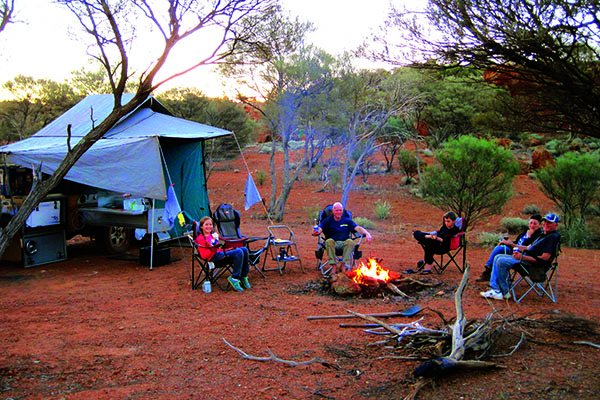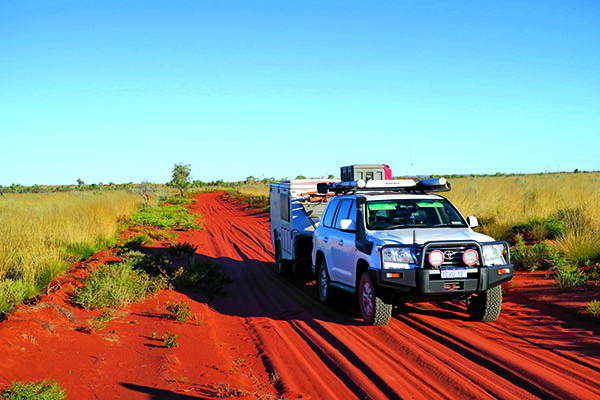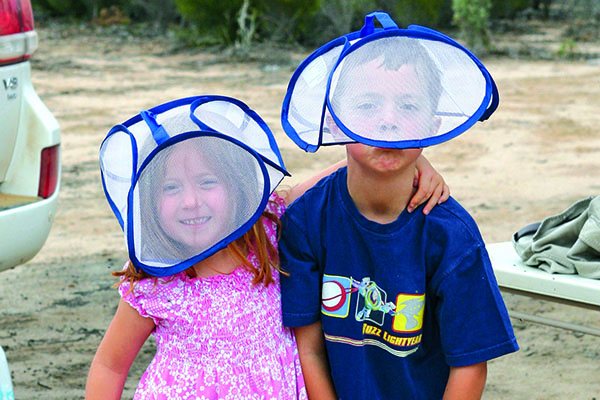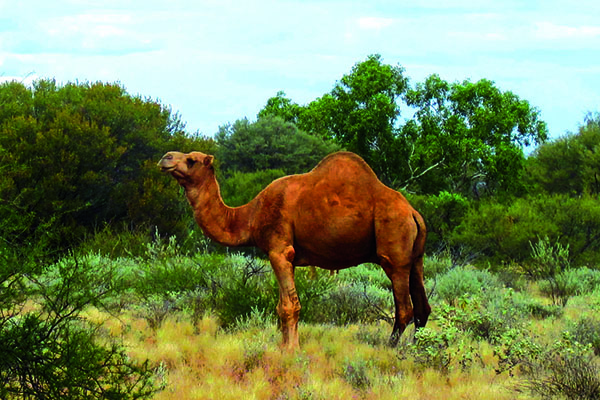Firstly, rest assured—the deserts of Australia aren't just one big, boring sandpit. Not that kids don’t love sand pits, but our deserts are so much more. Home to deep gorges with hidden oases, of rolling sand dunes studded with fragrant spinifex, the most amazing plants and tough animals. The deserts of Australia cover nearly 50 per cent of the entire continent and there are 10 different ones, each with their own special characteristics, just waiting to be explored.
The deserts are also home to many of our most iconic four-wheel drive tracks: the Gunbarrel Highway, Canning Stock Route and the Strzelecki, Oodnadatta, Tanami, and Birdsville Tracks. These tracks are part of the history of exploration and development of our outback and are destinations in their own right (the journey, often times, being the purpose rather than just a means to an end). At least one of them would have to be on everyone’s bucket list, and there’s lots kids can learn about the history of exploration in our country from desert touring.
You do, however, need to be prepared. A camping trip into the desert is something for the adventurous at heart. The deserts are big places with little or no infrastructure. You will have to do without five star comforts for a few days and you can easily go for days, and even weeks, without seeing another person, let alone a shop, so you need to be self sufficient.









All the basics about being prepared for remote travel are especially important in the desert; it can be a very harsh and unforgiving environment if something goes wrong. Some sort of emergency beacon that the kids know how to activate is something to seriously consider investing in if you plan to venture into the great outback deserts.
THE ESSENTIALS
Then there is water, which is of course one thing we can’t survive long without, and by definition is in short supply in the desert. Carry as much as you can, in more than one place, just in case disaster strikes and you lose your main source (like cracking a pipe and dropping a whole tank’s worth before you realise – been there, done that). A few strategically placed jerry cans can make all the difference between disaster and being able to pull through. You’ll also probably also want to take being water-wise to a whole new level – baby-wipes will become your best waterless-hygiene friend.
You may also need to pack food to last a bit longer than usual (no corner shops out here). Long life tetra-packs of things like: milk, juice and icy poles are gold as they can be stored out of the fridge/freezer until needed, meaning you can carry more of them to last longer than what will squeeze into the high value limited space in your fridge.
Consider removing excess packaging from items so they take up less space (for example things that come in a bag and then also a box, ditch the box before you pack it so you can fit more in). Also plan ahead when choosing items—for example with things like pasta, choose the smaller, or more compact shapes. The packets weigh the same, so you are getting the same amount of food, but the volume of space they take up is significantly different.
Any parent who takes kids camping deserves a well earned beverage at the end of the day. Pounding along corrugated tracks and lurching over sand dunes can take their toll on your glass-bottled beverage of choice, and nothing brings a tear to the eye quicker than the sound of shattering glass and the smell of your last bottle leaking away and soaking into the upholstery. There are neoprene bottle covers available now from camping and kitchen supply shops to fit everything from a stubby to a bottle of bubbles, which go a long way to preventing such tragedies from occurring.
If you're used to picking up a pie and chips for lunch at the roadhouse each day, this is going to need a rethink. Sliced cheese and crackers, maybe with some dip or vacuum-packed sliced ham, makes a great long-lasting lunch option when you're away from the shops. That said, when you do come across a shop or more likely a pub, they are places filled with history, quirky characters and icy-cold drinks. Support them when you can, for a memorable experience and so they can continue to be lighthouses out in the desert for weary travellers.
DESERT ATTIRE
With the food and beverages sorted, next come the clothes. When you think desert, the sun-smart slip-slop-slap thing is obvious. What can catch you out is how cold the nights and early morning can be. We are talking minus degrees here, so make sure that you and the kids have adequately-rated sleeping bags / bedding and warm clothes. As soon as the sun dips you'll quickly be swapping the sun-hat for a beanie and a warm jacket.
And depending on the time of year you travel, a good fly-net will be your best friend. They won’t win you any fashion awards, but they will save your sanity.
As much as the days can be warm, if you want to do some walking, closed-in shoes and thick, long pants (think denim jeans) are a must in spinifex country. These tough little plants are sharp and pack a nasty prick from their long, needle-sharp leaves. They’ll sometimes even make it through the thickness of denim, but it helps.
KIDS WILL LOVE THE DESERT, AND SO WILL YOU
So you’ve got this far and it’s all starting to sound like a lot of hard work and you might be starting to ask, why would you want to venture into the desert with kids in tow? Well, for the stunning scenery, magnificent rocks and gorges, the coloured sands and the unique plants and animals. The emptiness, remoteness and the huge distances of inland Australia have to be experienced to really be believed. Nature reigns supreme here — nowhere else will you experience the same unspoiled beauty, space and freedom.
Deserts are not necessarily completely devoid of vegetation, but they do have large areas where vegetation is very limited in height or extent due to lack of water. That said, if you keep an eye out at the right time of year, you will be rewarded with stunning wildflowers.
The dryness of the desert is a bit of a contradiction when you consider that the vast majority of landforms in the desert were formed by water. This makes the hidden oases still containing water within some gorges even more spectacular.
The deserts are full of life, but a lot of the animals seem to keep a low profile and are hard to find in the heat of the day, being only slightly more social at dawn and dusk (which makes these good times not to be driving, as desert animals seem to be particularly lacking in road sense). Camels, kangaroos and dingoes are probably your top three most likely to be spotted. If you have the misfortune to get stuck behind a camel on a track you might be there for a while, they have a misplaced sense of their own importance and will often run for kilometres right down the middle of the track, being chased by a 4WD but refusing to pull over and let you pass. And boy, do they smell baaaad.
Even if you don’t spot a lot of actual wildlife out in the deserts, the sand preserves a lot of interesting tracks. From big camel prints to tiny lines of lizard tracks, if you slow down and look, there's lots to spot. Birds tend to offer more real-time spotting opportunities. From the big wedgies and birds of prey, through to the clowning pink and grey galahs, right down to the flocks of little birds to be found around the permanent water holes. Each region will have its own selection.
THE DESERT AT NIGHT-TIME
And the crowning glory of a trip into the deserts in the heart of Australia? Nowhere will you see a night’s sky like in the desert. It's out here, in places miles from anywhere, which give you a real understanding of why they call it the Milky Way. Yes, you may pay a price the next day, but at least one night let the kids to stay up late to see the sky in all its glory. Spot moving satellites. Make a wish on a shooting star. Find the Southern Cross, the Pot and any other celestial patterns you know of. Hopefully it won't be exactly a once in a lifetime experience, but it's certainly not something you can replicate back home in town.
And isn’t that why we take them camping after all?




